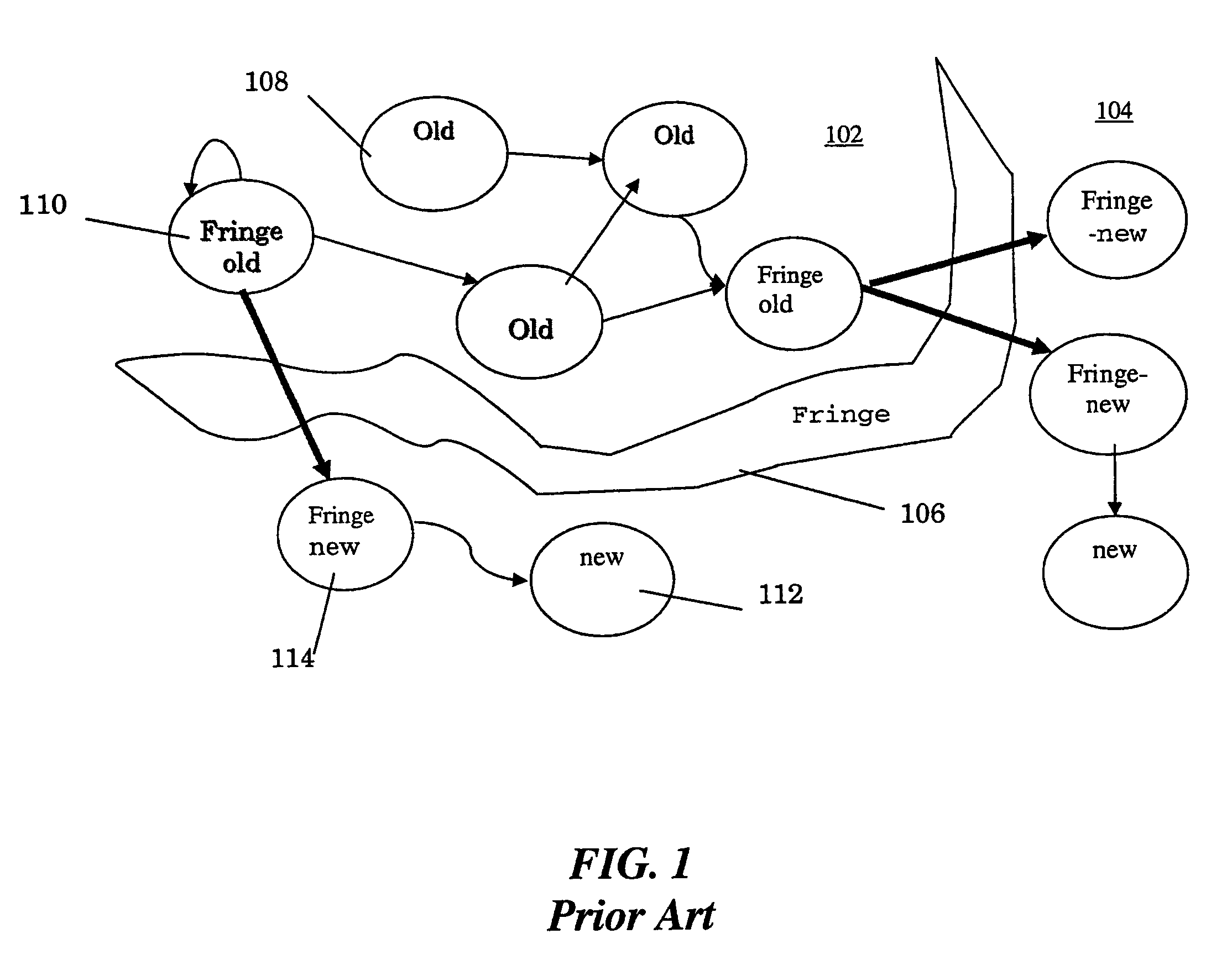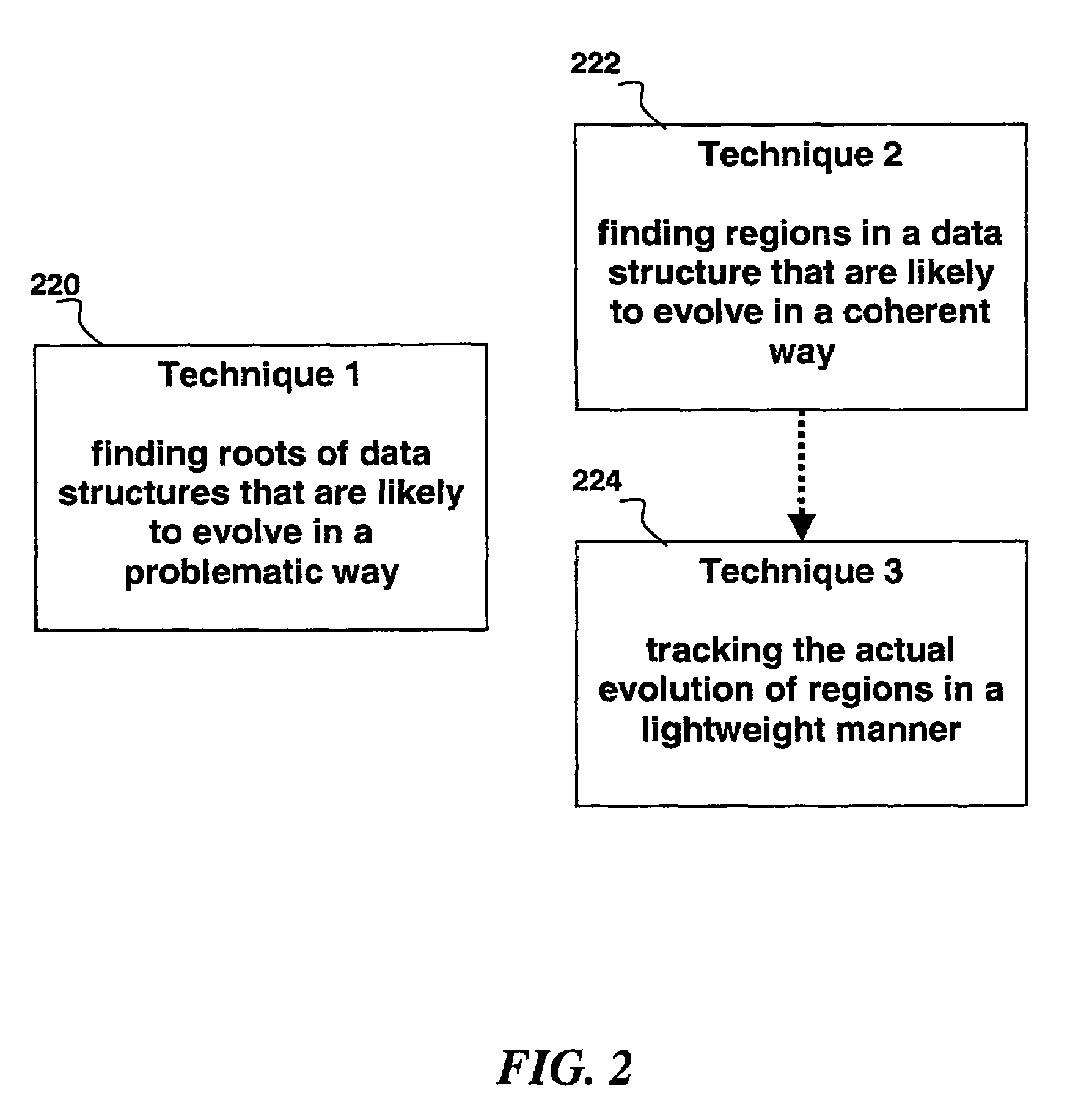Automated scalable and adaptive system for memory analysis via online region evolution tracking
a memory analysis and adaptive technology, applied in the field of information processing systems, can solve problems such as memory leakage, system slowdown and failure, memory problems,
- Summary
- Abstract
- Description
- Claims
- Application Information
AI Technical Summary
Benefits of technology
Problems solved by technology
Method used
Image
Examples
Embodiment Construction
[0030]According to an embodiment of the invention the difficulties discussed above are overcome by raising the level of analysis from individual objects to regions within data structures. Data structures are subgraphs of an object reference graph snapshot, where the nodes of the subgraph are identified as the owners of the remaining constituents. This approach has two beneficial consequences. First, it enables automated discovery and simple presentations of what is really causing problematic data structure evolution (such as a memory leak or leaks). Second, it enables lightweight and automated tracking of how whole data structures evolve. To realize these benefits, these new methods are utilized: 1) ranking data structures automatically by their likelihood of containing leaks; 2) identifying suspicious regions within a data structure; 3) characterizing their expected evolution, and 4) a lightweight system to track those regions' actual evolution as the program runs.
[0031]FIG. 2 intr...
PUM
 Login to View More
Login to View More Abstract
Description
Claims
Application Information
 Login to View More
Login to View More - R&D
- Intellectual Property
- Life Sciences
- Materials
- Tech Scout
- Unparalleled Data Quality
- Higher Quality Content
- 60% Fewer Hallucinations
Browse by: Latest US Patents, China's latest patents, Technical Efficacy Thesaurus, Application Domain, Technology Topic, Popular Technical Reports.
© 2025 PatSnap. All rights reserved.Legal|Privacy policy|Modern Slavery Act Transparency Statement|Sitemap|About US| Contact US: help@patsnap.com



